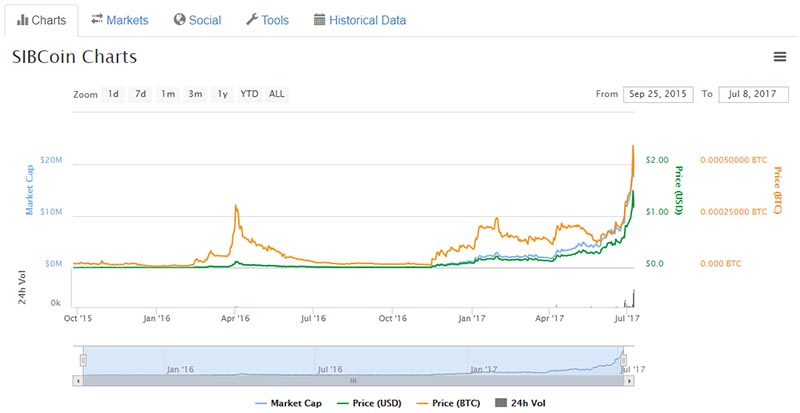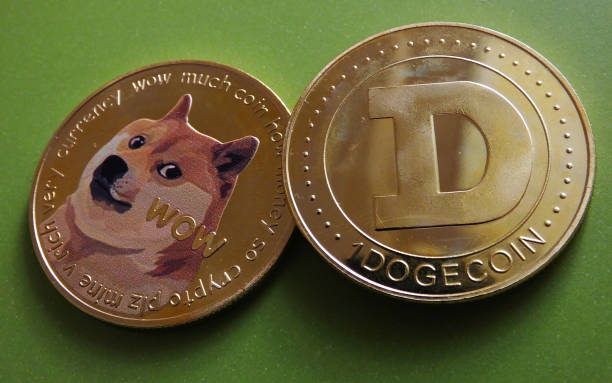The cryptocurrency industry is full of altcoins, and their number has already exceeded one thousand. Due to the fact that most cryptocurrencies are open source, it can often take just one tech-savvy enthusiast to fork a virtual currency and thus create something completely different. That is how Litecoin came to be.

The Birth of Sibcoin
When it comes to these forked cryptocurrencies, however, the sad truth is that unless the developers have something serious on their minds, the newly created coin is likely to fade into insignificance shortly after its birth. Some such coins were merely created for training purposes; others for fun; there even have been altcoins minted for a quick buck, and nothing else.
Sibcoin, an offspring of Dash, could have easily become one of the numerous altcoins that fade into obscurity if it wasn’t set to outdo its mother coin. While it is still far behind it in terms of market cap and general acceptance, those factors are more than outweighed by the options it has that Dash is lacking, as the well as the growth rate of its community and its price.
First conceived in 2015 by a group of tech enthusiasts from Siberia (hence the name), it was developed as the first cryptocurrency of choice for local crypto communities. Nevertheless, shortly after its release, it expanded across the border to China, and from there Sibcoin started spreading across the international market.
The project’s team has stated that its prime objective has always been to develop a cryptocurrency that could be understood, accepted and used by average people. The complexities inherent in dealing with most cryptocurrencies involve multistage operations like transferring money from a wallet to an exchange, operating the money at the exchange, and withdrawing it. This procedure seems easy for seasoned cryptocurrency users, but rookies consider it complicated and intricate.

Sibcoin Outpacing Dash in Functionality
Dash was chosen as the source for Sibcoin for many reasons, chief among them its ASIC resistance. It is, perhaps, ironic then that Dash can now only be profitably mined using Dash-specific ASIC hardware. GPU and CPU mining are no longer cost effective. Sibcoin, on the other hand, uses a different algorithm on top of Dash’s X11 so that it can be mined with a GPU.
Dash does have a pretty smart governance system, however, which entitles any holder of 1,000 Dash to operate a masternode and have a vote when it comes to deciding on the project’s future development. Unfortunately, while it seemed more than reasonable in the early days of Dash when it was known as Darkcoin, with the current price of being over $200 per coin at the time of this writing, it has become an expensive proposition to have your own masternode.
What really makes Sibcoin truly different from Dash is the applicability and real-world usability that the project’s team is working on to bring cryptocurrencies closer to people pursuant to its own promise.
A few weeks ago, Sibcoin rolled out Perevod.io, a service that enables people to send money from anywhere to anywhere, and requires little to no knowledge of cryptocurrencies. By using a phone number, a password, and a link, someone may send money anywhere in the world using Sibcoin and the recipient will get the remittance in their own local fiat currency. This could eliminate the problem new users often face when trying to grasp the mechanics of cryptocurrency transfers.
In further efforts toward mainstream adoption, Sibcoin recently announced its integration with Moneypolo, an international payments processor that works with both cryptocurrency-focused and traditional entities. With Bitcoin being almost the only cryptocurrency solution linked to real-life money, it acts like an intermediary currency when it comes to exchanging an altcoin for fiat. With Sibcoin integrated into Moneypolo, a Sibcoin payment may go directly to a user’s card that they may later use for their routine shopping.
The project’s team has also announced it is working on another service that would make it possible to send money to numerous cards at once, and, what is more, those cards can be issued in any country of the world.
My How Sibcoin Has Grown
Endeavors such as the abovementioned have surely had an effect on Sibcoin’s growth. Valued at less than $0.05 USD for most of 2016, Sibcoin underwent a significant growth spurt in the first half of 2017 to arrive at its current value of $1.17 USD – a growth rate of over 2230% – as of the time of this writing. The currency’s market cap has also significantly increased, currently sitting at just over $17.4 million.

This growth, combined with the continuing development of services built on Sibcoin, makes it not just a worthy investment but possibly one of the best newcomer altcoins the industry has seen in the recent years.
The community around Sibcoin is also growing and encompasses more and more people from different countries every day. The expansion of Sibcoin across international cryptocurrency markets continues.
Sibcoin creators once stated that they hope one day their project could outdo its mother coin, Dash. While that goal has yet to be achieved in its entirety, there are certain grounds to suggest that one day it will.
What do you think of Sibcoin and the services it has spawned? Could it really outpace Dash? Let us know in the comments below.
Images courtesy of CoinMarketCap, Wikimedia Commons










